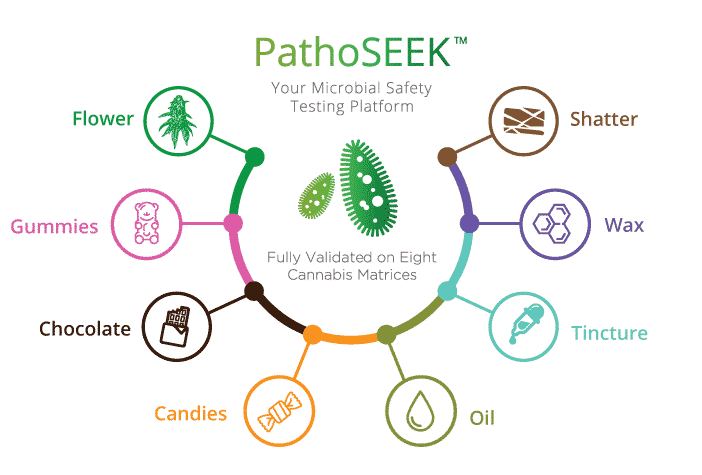We have been using the PathoSEEK qPCR platform for our cannabis testing since its opening. The system is relatively easy to use for anyone with basic training in molecular biology. Specialized training in mycology is not required. In addition, since specific genetic signatures are used instead of colony morphology, the system is less open to interpretation. In addition, results are obtained quickly, which helps with valuable turnaround time.
Fully validated in cannabis
Medicinal Genomics validated its PathoSEEK tests on a variety of cannabis and hemp matrices (flower, extract and infused products) and provides extensive validation data upon request.
Internal controls included
Each PathoSEEK test reaction includes an internal cannabis control, ensuring that each reaction has been performed correctly and the results are reliable. No other cannabis microbial testing platform includes internal cannabis controls.
PathoSEEK assays detect target organisms at the genetic level, looking for unique DNA sequences associated with each organism or group of organisms. This avoids costly false positives. In contrast, research has shown that culture-based methods often produce off-target organisms, leading to false positives and increased pesticide use.
PathoSEEK® Individuals
The PathoSEEK® microbial safety testing platform is the only method designed specifically for use on cannabis and hemp products, including flowers, extracts and a variety of infused products. The PathoSEEK platform uses qPCR technology, an established safety testing method in the food industry and medicine that has been used in several peer-reviewed studies.
| Technical Data | Yes |
|---|---|
| Marca |
Other products
Proteinase K
Part number: PB0451
Deoxynucleotide (dNTP) Mix – CD1020
It is an aqueous solution containing an equimolar solution of...
Agar A
Part number: FB0010
SMOChem. dTTP Solution – Sodium Salt (100 mM)
Ultrapure dTTP solution supplied as sodium salt in purified water...








